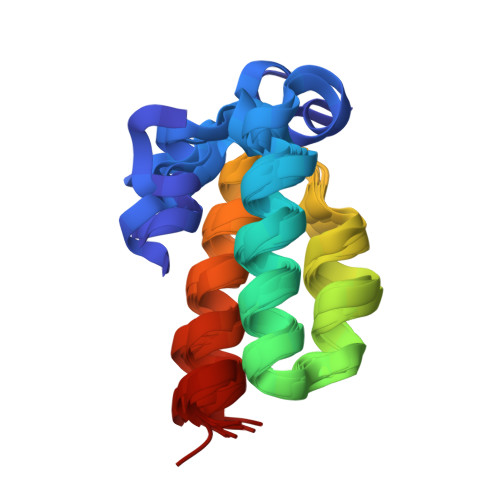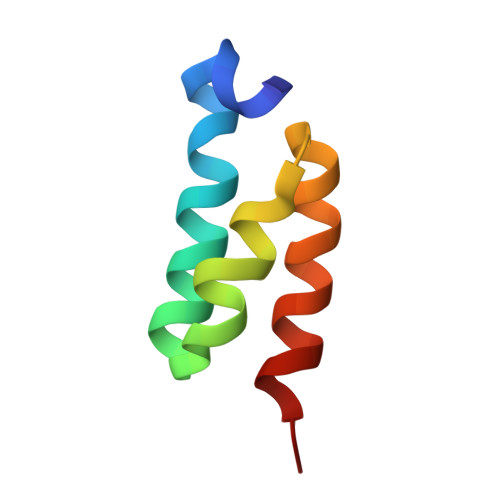Mutational tipping points for switching protein folds and functions.
He, Y., Chen, Y., Alexander, P.A., Bryan, P.N., Orban, J.(2012) Structure 20: 283-291
- PubMed: 22325777
- DOI: https://doi.org/10.1016/j.str.2011.11.018
- Primary Citation of Related Structures:
2LHC, 2LHD, 2LHE, 2LHG - PubMed Abstract:
While disordered to ordered rearrangements are relatively common, the ability of proteins to switch from one ordered fold to a completely different fold is generally regarded as rare, and few fold switches have been characterized. Here, in a designed system, we examine the mutational requirements for transitioning between folds and functions. We show that switching between monomeric 3α and 4β+α folds can occur in multiple ways with successive single amino acid changes at diverse residue positions, raising the likelihood that such transitions occur in the evolution of new folds. Even mutations on the periphery of the core can tip the balance between alternatively folded states. Ligand-binding studies illustrate that a new immunoglobulin G-binding function can be gained well before the relevant 4β+α fold is appreciably populated in the unbound protein. The results provide new insights into the evolution of fold and function.
Organizational Affiliation:
Institute for Bioscience and Biotechnology Research, University of Maryland College Park, 9600 Gudelsky Drive, Rockville, MD 20850, USA.
















